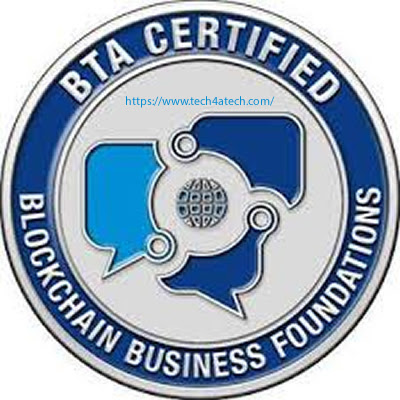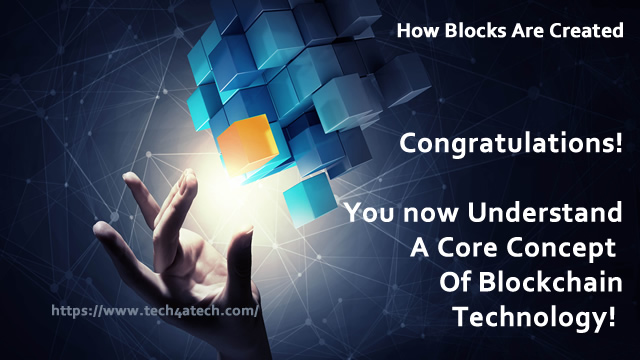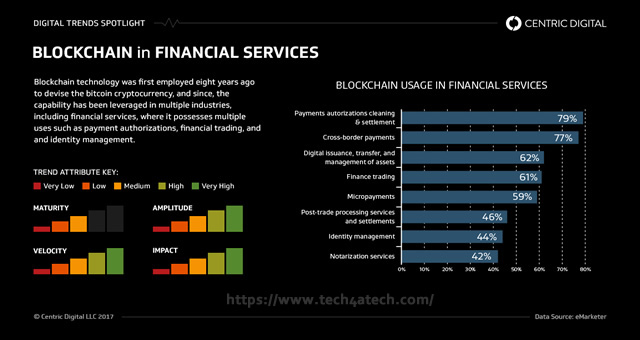PART (1)
Certified Blockchain Business Foundations (CBBF)
 |
Bta-Blockchain-Business-Foundations-12 |
BTA-Blockchain-Business-Foundations
The Certified Blockchain Business Foundations (CBBF) exam study guide focuses on four
sections:
General Blockchain Knowledge, Why Use Blockchain, How Blockchain Works, and using Blockchain for Business. This guide will prepare you for the Pearson VUE CBBF exam.
This exam guide includes:
Certified Blockchain Business Foundations (CBBF) Official Exam Study Guide v1.1 By: Kris Bennett and Chad Decker Book is published by Blockchain Training Alliance, Inc.
All rights reserved. No part of this book may be reproduced or utilized in any form by any means, electronic or mechanical, including photocopying, scanning, recording, or by information storage or retrieval systems, without express permission in writing from the author, with the exception of small excerpts used in published reviews.
Limit of Liability / Disclaimer of Warranty / Terms of Use While the publisher and author have used their best efforts in preparing this book, they make no representations or warranties with respect to the accuracy or completeness of the contents of this book and specifically disclaim any implied warranties of merchantability or fitness for a particular purpose. There are no warranties which extend beyond the descriptions contained in this paragraph. No warranty may be created or extended by sales representatives or written sales materials. The advice and strategies contained herein may not apply or be suitable for your situation. You should consult with a professional where appropriate. The accuracy and completeness of the information provided herein and the opinions stated herein are not guaranteed or warranted to produce any particular results, and the advice and strategies contained herein are not suitable for every individual. By providing information or links to other companies or websites, the publisher and the author do not guarantee, approve or endorse the information or products available at any linked websites or mentioned companies, or persons, nor does a link indicate any association with or endorsement by the publisher or author.
This publication is designed to provide information with regard to the subject matter covered. It is offered or sold with the understanding that neither the publisher nor the author is engaged in rendering legal, accounting, investment, or other professional service. If legal advice or other expert assistance is required, the services of a competent professional should be sought. This publication is no guarantee of passing this exam or other exam in the future. Neither the publisher or the author shall be liable for any loss or loss of profit or any other commercial damages, including but not limited to special, incidental, consequential, or other damages.
What is Blockchain
Introduction:
Welcome to the Blockchain Business Fundamentals course study guide. This guide is intended to help you identify key topics and subject areas related to the Blockchain Training Alliance’s exam and certification for Blockchain Business Fundamentals. This guide is intended to present the reader with a variety of topics for self-study, with the intended outcome of helping the reader pass the exam and earn a CBBF certification.
What is Blockchain?
In order to properly understand blockchain, there are some key core concepts students should be familiar with. These key concepts include security, trustless-ness, decentralization, distributed ledgers, group consensus and immutability. In this section, and throughout this study guide, these topics will be presented and analyzed. In order to fully understand these key concepts and more, it’s important to start with the basics.
At its most basic level, blockchain is an immutable record, or ledger.
The ledger is often used to track and manage asset ownership, however blockchain can be a simple record keeping device for any and all kinds of data – whether that data relates to asset ownership or not. Although blockchain is often described as a new and cutting-edge technology, the truth is blockchain is nothing more than a creative amalgamation of many old concepts, technologies, and methodologies. These components include ledgers, cryptography, group consensus, immutability and more.
At the core of blockchain is a ledger, a record keeping device which allows the keepers of a ledger to tell a story. This story usually revolves around the ownership and history of ownership of assets, although ledgers can be used to record just about any type of data imaginable. The earliest ledgers in human history appeared over 7,000 years ago and marked a key development milestone in human society, culture, and economics. Before this time ledgers were largely unnecessary; humans rarely owned more than they could carry around with them at any given time, and any trade, commerce, or exchange was largely limited to small tribal units and villages. Soon after humanity gave up a nomadic lifestyle to pursue an agrarian one the benefits became apparent.
It wasn’t long before the average person had accumulated enough wealth that it was simply not practical or even feasible to be carried around all at once. At this point in history it became important to have a documented and permanent record of asset ownership. The introduction of ledgers into human society solved this problem and allowed people to trade across much larger groups; humans could now trade and conduct commerce with others who shared vastly different languages, cultural values, and backgrounds. Small tribal units and villages gave way to large cities and empires – a new chapter of human history was being written.
 |
Vision-Blockchain-08 |
Another core component of blockchain technologies is cryptography – the study of how to pass information back and forth in the presence of adversaries, bad actors, or simply audiences with no need to know. Although cryptography is often thought of as a cutting-edge discipline it is really quite ancient. As long as there have been two or more people on Earth who wished to keep a secret from someone else, there has been cryptography. In blockchain we use cryptography to protect anonymity, to provide ledger immutability, and to validate claims that people make against assets tracked and managed on the blockchain.
Finally, blockchain makes extensive use of existing computer networking technology, specifically peer-to- peer network architectures. The same technology that serves as the backbone of our modern internet also underlies blockchain. Adding a peer-to-peer (P2P) network architectures in the mix increases redundancy and fault tolerance by removing single points of failure commonly found in typical client / server network architectures.
If all of these concepts still seem a bit vague, don’t worry. This guide will help introduce you to them in greater detail, and a wealth of information about each and every one of these topics can be found online for those wishing to get a deeper dive.
For right now, simply think of blockchain as the following simple process: 1. An announcement is made before multiple witnesses (nodes, miners, validators, etc). 2. Each participant documents the details of the announcement in their own personal copy of the ledger. 3. Announcements are grouped together in “blocks”. Each participant regularly attempts to compare their current block with the current block of all the other participants on the network. 4. If there is a version of the current block which the majority of participants have in common, this version is considered to be the truth. Any participant that does not have the same data as the majority will simply discard their copy, obtain a copy from another participant, and move on.
Assets and Blockchain
Assets are a key component of any blockchain solution. Assets are simply the items that we’re keeping records about, the items that ‘matter’ in the context of a given solution or use case. Assets can be defined as anything that requires a record of ownership. This can be monetary, non-monetary, or just information, like health records, tickets to an event, an auto title, or a patent.
Blockchain started as a record keeping system to record the transfer of digital “tokens” or “coins” such as Bitcoin and other cryptocurrencies. These coins and tokens required a way to keep a record of ownership. Out of the need to create a record of digital ownership, blockchain was born. In many ways blockchain seeks to supplement the internet of information we know today with the internet of value we’re designing for the future.
Blockchains are important because they provide a safe and secure way for people to make any type of transaction without having to trust the other party. This concept in blockchain is known as “trustlessness” – as long as each participant in a transaction can trust in the accuracy and integrity of the ledger there is no additional requirement for trust between them.
Blockchains provide a digital immutable ledger that is widely distributed and peer-validated. It is critically important to note that a Blockchain does not require currency to function properly and most enterprise- level Blockchain applications require no special currency, coin, or token.
Blockchain can also be used as an event tracking system where announcements mark the occurrence of significant events and those events can be made actionable through the use of Smart Contracts/ Chaincode; software programmed to respond to certain types of these events.
By using Smart Contracts/Chaincode to handle meaningful events, Blockchain can also be a workflow/ BPM/BPA platform.
Blockchain History
The story of blockchain begins with a whitepaper published by an anonymous author a decade ago. Blockchain began as an idea documented by Satoshi Nakamoto. The ideas outlined in this whitepaper lead to the world’s first and largest Blockchain – Bitcoin.
Bitcoin is a cryptocurrency that keeps its users highly anonymous through public key cryptography and cryptographic hashing. In public key cryptography users store their bitcoin in a digital wallet. This wallet contains the account’s private key which is used to sign all transactions from that account. Any transactions presented by that account will be verified by the network using the corresponding public key for the account.
It is important to note that while common, anonymity is not a requirement of a blockchain platform. Many platforms, especially those aimed at business and enterprise use, replace anonymity with identity to allow solutions architects and administrators the ability to define and enforce permissions and role-based access. In many business scenarios, the anonymity and full-transparency that define public platforms are wholly undesirable but some sort of permanent append-only ledger is still required.
Cryptocurrency and Blockchain
Introduction:
It is not uncommon to hear comparisons made between blockchain and the internet. Both are revolutionary technologies with the power to reshape the way we think, act, and view the world. Comparisons of the two platforms often invoke remembrances to the famous attage that “history does not repeat itself, but it often times rhymes”. This due the many similarities that blockchain shows at this early stage to early stages of internet roll-out and adoption. Perhaps the biggest similarities between the two platforms exist in the first “killer app” to be built upon each.
 |
Blockchain-Financial-Services-07 |
When reflecting on the history of the internet, it’s easy to see that the first truly consumer-grade application built on this new technological platform and deployed at scale was email. In other words, email was the introduction many early users had to the internet. Of course, as we all know, email is hardly the only use case for the internet and is far from the most interesting, dynamic, or impactful.
Similarly, the first consumer-grade application built on blockchain and deployed at scale has been cryptocurrency. For many early users, cryptocurrencies serve as the introduction and first hands-on experience with blockchain technology. However, just as the internet is far more than just email, blockchain is far more than just digital currencies.